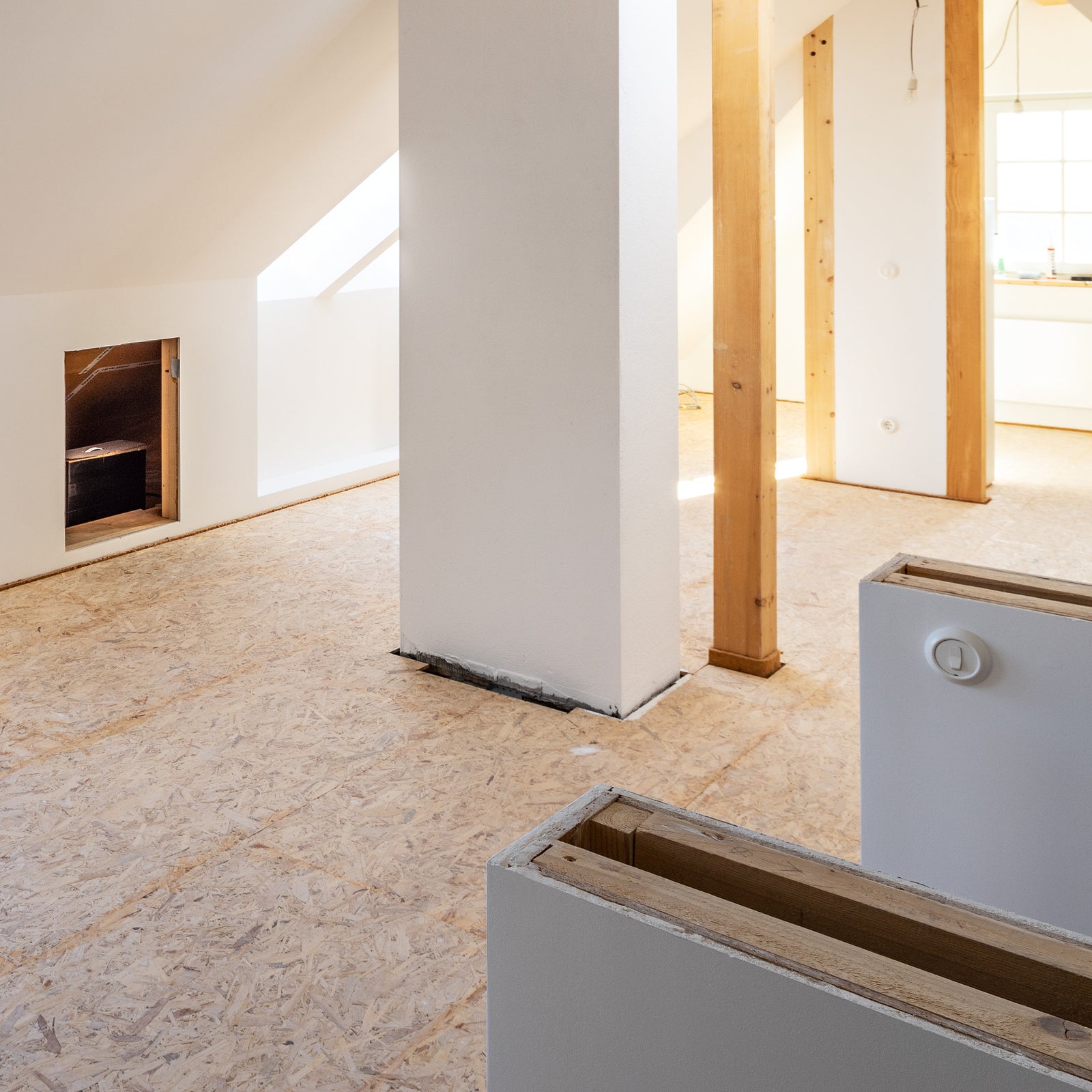When it comes to converting your loft, there are a few things that top the list of the most important elements you need. One of those will be the way you access the loft and this depends a lot on what you use it for. The other will be the type of boards you use on the floor of the loft.
There are two main categories of floor boards out there - structural loft floor boards and non-structural boards. Understanding the difference and getting the right type will be a big factor in the success of your loft conversion.
What’s the difference between structural and non-structural?
When you hear the terms structural floor boards and non-structural, then it is clear there’s a difference. But what is this and how does it affect what you use them for?
The big difference both the wood and the glue used to manufacture the boards. Plywood has to meet very specific standards and these are even higher if it is to be classed as a structural board. In the UK, we have a bit of a complex system for classifying plywood.
The British Standard for plywood
The basic standard to look for first is EN 314-2: 1993 – Plywood - Bonding Quality, Requirements. This then uses three classes to show what the plywood is suitable for:
Class I: great for dry interior uses
Class II: works in humid areas and can withstand occasional wetting
Class III: fine for unprotected exterior uses and can handle frequent wetting or exposure to harsh weather
On top of that, boards are then assessed under EN 636: 2003 – Plywood - Specifications. With this, the wood is tested in a lab under harsher conditions and then receives one of three classes depending on the wood used, the bond quality and how much it can resist things like fungal decay and beetle infestation.
These are:
Class I: suitable only inside for dry areas
Class II: suitable for humid areas that might occasionally get wet
Class III: suitable for use outside even if unprotected and where it frequently gets wet
Getting the right boards
Confused? It can seem a bit complex but it is to ensure that the boards are the strongest possible for the job. However, it isn’t the most user-friendly approach if you don’t work with these things all of the time.
So when it comes to structural boards, these are designed for light storage and occasional access use only. They work with joists that have 600mm centres at a maximum and can also work with loft legs as needed.
Non-structural boards, often just called chipboard loft boards, are the version that does reach those higher classes and can’t be used for structural flooring or with loft legs. It can sit on top of space board insulation or be used to finish a space where the extra strength isn’t needed.
A solid loft floor
Getting the right loft floor is a big deal and that’s why structural loft floor boards are going to be the choice in most situations. You might use non-structural boards if there’s already a solid floor in place. Or in other parts of the house to level out a floor. But when you need something strong and structural, the right boards will make all the difference.




